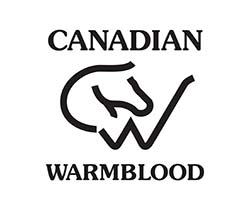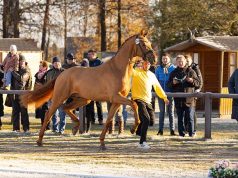By Chris Gould / CWHBA
Photography: Peter Llewellyn
In the first part of this series we mentioned that Warmblood horses began to appear in Canada in the 1960s. Importation proceeded steadily throughout the next two decades, with the consequent formation of the Canadian Warmblood Horse Breeders Association in 1988.
Like many countries, Canada has legislated the regulation of breed societies requiring identification of foundation animals for any distinct breed operating in Canada. This may be achieved by designating a foreign parent or foundation studbook(s) as the sole source of animals or it may be achieved by identifying closely related, phenotypical animals that constitute the foundation of the breed.
Since Warmblood horses are produced in a large number of countries under regional names, and with more new ones being formed, it did not prove practical to simply list all the breed societies in Europe and elsewhere. It would have required extensive research to ensure that all the societies were operating under similar rules, with the same genetic constraints. It proved to be much more acceptable under the legislation to identify influential historic sires, from the 19th and early 20th centuries, that had been used throughout Europe on the indigenous Warmblood mare population.
Although transported and frozen semen did not exist at the time, it was fascinating to discover how widely travelled some of the stallions were and how quickly their sons and daughters spread throughout the various studbooks. And it’s important to remember that prior to the 20th century pedigrees were recorded almost exclusively by State studfarms. The ‘Hannoversches Stutbuch fur edles Warmblut’, which later became the Verband Hannoverscher Warmblutsucchter e.V. (Warmblood Horse Breeders Society of Hanover), formed in 1888, was the first breeder-operated studbook, and it was quickly followed by others throughout Germany and the rest of Europe.
Twenty-five stallions were identified, the oldest born in 1840 and the youngest in 1926, with the most prominent four being present in 90% plus of CWHBA registered horses. Even the least common are still found in 33% of the pedigrees... To read the complete article you need to be a subscriber
CLICK HERE TO SUBSCRIBE TO BREEDING NEWS
SUBSCRIBERS CAN READ THE COMPLETE ARTICLE BY LOGGING IN AND RETURNING TO THIS PAGE




